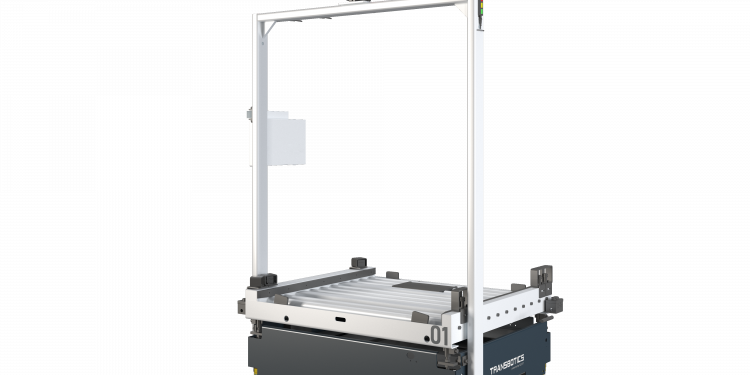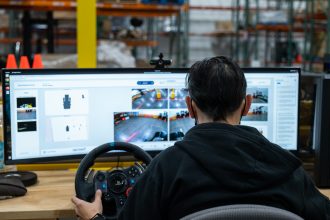Navigating the Mobile Automation Landscape

Enterprises in every sector, including logistics, use digital technology to enhance their supply chain systems’ environmental and economic sustainability. This is called the next-gen supply chain market. The worldwide next-gen supply chain market generated roughly $32 billion in 2019 and the market size is set to double by 2030.
Automated mobile vehicle types are increasing and transforming the supply chain industry. If you’re looking to invest in mobile automation to enhance your supply chain efficiency, it is critical to understand certain factors, such as:
- How these systems function
- The processes you can automate
- When to expect returns on your investment
This guide will outline the similarities and differences between mobile automation terms like AGVs and AMRs. Also, the best use-case practices and how to make sound Return on Investment (ROI) calculations in mobile automation.
The similarities and differences between AGVs and AMRs
Automated Guided Vehicles (AGVs) are computer-controlled load carriers that move on wheels over an industrial facility’s floor with no intervention from an onboard operator or driver. Instead, guided systems control them based on a combination of software and sensors. So, they move on predefined paths or tracks (mainly via Laser Triangulation, Inertial or Fixed Natural Feature Navigation) with precise acceleration and deceleration.
Autonomous Mobile Robots (AMR) are similar to their predecessors (AGVs) but have one difference. AMRs utilize internal facility maps to efficiently navigate based on current conditions, which enables them to work flexibly alongside human workers and adapt to changes in the layout or product mix on the fly. AGVs, on the other hand, use a centralized traffic management system and require specific infrastructure through which they will move.
AGVs are suitable for applications where there is a large number of fixed tasks involved, such as transporting raw materials, packaging, sorting, and delivery through predefined routes. On the contrary, since AMRs can adapt to changing environments, they can be implemented in any space where both humans and machines are required.
The best use case practices
The primary functional uses of AGVs include transport, receiving/put away, picking, transfer, storage/retrieval, loading/unloading, and assembly line. They are widely used in production, healthcare, pharmaceuticals, packaging, food, paper, printing, and automotive.
For example, a major US-based building materials manufacturer decided to automate the transfer of palletized cement boards in and out of its curing room. In order to suit the spatial constraints of the building, they deployed a dual navigation vehicle with inertial and laser guidance. In addition, the AGV had a color touch screen UI, buttons for start, Soft-stop and E-stop functions, a battery status meter, travel lights with a signal indication for turns, travel and alert alarm, and numerous other safety features.
Ultimately, the implementation of AGVs significantly increased safety, decreased labor costs, and maximized production throughput. Since the AGV took care of moving the goods, forklifts were no longer required to operate in congested areas, which further increased safety and helped reduce product damage. The new system can support the movement of over 1,600 loads over 41 hours in a forklift-free environment.
Sound ROI calculations in mobile automation
Automation comes with numerous benefits that also boost the ROI of your enterprise. It frees employees from monotonous tasks and makes them focus on tasks requiring more analytical thinking. Plus, it increases the productivity of your employees and the quality of products, facilitating better business growth.
When calculating ROI for such systems, it is vital to place a time frame in your calculations. You can expect a decent ROI in 12-24 months in a sluggish economy. However, in the current economic scenario, 24-36 months ROI is acceptable. There are even industries that use 4-5 years to calculate ROI. Many companies also rely on leasing capital-intensive equipment or use Robots as a Service (RaaS) rather than buying them for better returns.
You should also consider several factors in your ROI calculation such as
- Insurance costs
- Labor cuts
- Product damage
- Worker safety
- Production efficiency
- Ergonomic issues
- Building damage
- Medical issues
Mobile Automation: An invisible force
Supply chain networks act as an invisible force that connects everything to ensure that you get the right products at the right place and at the right time. It is always awake and works 24/7 for you, even during disruptions.
However, the supply chain industry is constantly evolving. In such a dynamic environment, it is difficult for professionals to keep up with the latest trends, innovations, and competitive advantages needed to ensure an optimized supply chain that serves their clients better.
To find out more about MHI’s MAG Industry Group: https://www.mhi.org/mag
To learn more about how mobile automation can benefit you:
Getting Started With Mobile Automation
The Unexpected (Soft) Benefits Of Mobile Automation
How To Make Mobile Automation Affordable
Understanding The Differences Between AGVs And AMRs
Discover How Mobile Automated Vehicles Enhance A Variety Of Material …
How Mobile Autonomous Vehicles Address E-Commerce, Automotive And Food/Beverage Handling …



